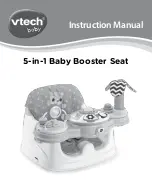
I
16
I
Temposonics
®
MH Series
Installation Manual
4.7 Mounting sensors with cable or single conductor connection
Temposonics
®
sensors are protected according to IP67 (MH) or IP65 (MS, MT). To further minimize the ingress of water into the sensor housing,
important aspects should be taken into account when sealing the sensor as well as the cable or conductor connection.
4.7.1 Mounting sensors with cable connection and cable gland
When using
third-party connectors
with Temposonics
®
sensor cables, the following conditions must be met:
• The connector protection type should be at least IP68.
• The connectors should enclose also the cable sheathing, in order to prevent exposed conductors and to provide strain relief. Otherwise
the conductors are not sufficiently protected against external effects.
• Unless the cable sheathing is enclosed by the connector, water running along the cable can enter the cable at the point where the
sheathing has been stripped.
• If the cable sheathing is not enclosed by the connector, gasket material should be applied to the point at which the sheathing has been
-
stripped, in order to preclude the ingress of water.
• Make sure that the polarity is correct.
• For connectors with screw terminals, cable end sleeves should be used to avoid short circuiting.
• If connectors are equipped with solder contacts, make sure that the contacts are soldered correctly.
• Crimp contacts on connectors should be gas-tight and pressed only using suitable tools, because this is the pre-requisite for precluding
contact defects due to corrosion.
• When mounting connectors, make sure protection against ESD is provided, i.e. workplaces and personnel must be protected against
electrostatic charging.
• Cable glands should be protected against damage by surrounding steel profiles (e.g. U-steel)
4.7.2 Mounting sensors with single conductor and third-party connector
When mounting third-party connectors on sensors with single conductors, the following information should be taken into account:
• The connector protection type should be at least IP68. Make sure O-rings are fitted correctly.
• The connector housing should be completely of metal. Plastic connectors can be damaged easily, thus tightness is not ensured.
• Make sure that the polarity is correct.
• For connectors with screw terminals, cable end sleeves should be used, in order to prevent short circuiting and contact corrosion.
• End sleeves should be pressed onto the conductors in a way that all strands are clamped into the sleeve. Protruding strands can cause
short circuiting!
• If connectors are provided with solder contacts, ensure that the contacts are soldered correctly and that no strands stand proud.
• Crimp contacts should be gas-tight and pressed only using special crimp tools. This is the pre-requisite to preclude corrosion of con
-
tacts.
• Most commercially available connectors are not or not sufficiently protected against the ingress of water running along the cable.
For this reason, suitable caps should be fitted to close them after mounting.
• When mounting connectors, make sure protection against ESD is provided, i.e. workplaces and personnel must be protected against
electrostatic charging.
Sensors with cable connection should be mounted using an (ideally
metal) IP68 cable entry gland for sealing and strain relief. Make sure
that strain relief is provided in the further cable run.
Cable gland
Summary of Contents for Temposonics MH Series
Page 35: ......
















































